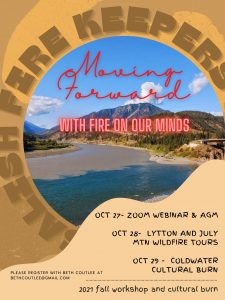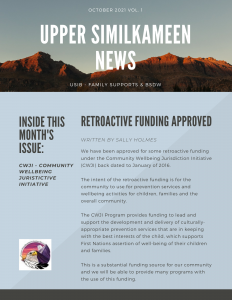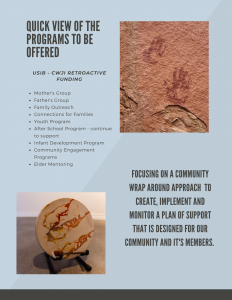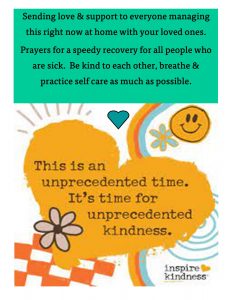Upper Similkameen Indian Band Communicable Disease Plan – September 2021
(Version 2.0)
Transitional Measures
In keeping with the recommended advice of the Provincial Health Officer, the Upper Similkameen Indian Band (USIB) will be maintaining the following measures and protocols from its COVID-19 Safety Plan:
- Physical distancing to reduce points of congestion
- Use of face masks
- Use of physical barriers
- Personal hygiene supports
- Enhanced cleaning protocols
These measures and protocols are intended to be transitional and will be monitored and re-evaluated on a regular basis. A detailed listing can be found in Appendix 1.
Introduction
This Communicable Disease Plan (“Plan”) is designed to promote the health and safety of those working in USIB buildings, and members of the general public/community by providing information that can be used to prevent the contraction and spread of communicable diseases and the appropriate response to a communicable disease outbreak. A communicable disease is an illness caused by an infectious agent or its toxic product that can be transmitted in a workplace from one person to another. Examples of communicable disease that may circulate in the workplace include COVID-19, norovirus, and seasonal influenza.
USIB’s communicable disease prevention, mitigation, and response activities are guided by the Plan. Any changes to prevention measures, such as during periods of elevated risk (i.e., flu season) or if an outbreak of communicable disease occurs, will be communicated to all staff.
This Plan has been developed in conjunction with the guidelines recommended by WorkSafeBC and the Provincial Health Officer (PHO). Administration will continue to review and modify the Plan based on the advice of the PHO and in response to any changes in provincial public health guidance.
Any questions or concerns regarding the Plan can be directed to Human Resources by email ![]() or phone 250-292-8733.
or phone 250-292-8733.
The health and safety of those working in USIB buildings remains the number one priority. Updates will be provided to all staff when there are significant changes to USIB’s Plan or approach to communicable disease management. These updates will be through email communications.
Regular workplace inspections will be conducted to ensure the measures outlined in this Plan are in place.
Reducing the Risk
Ongoing Measures:
Preventing communicable disease involves implementing measures to reduce the risk of transmission in the workplace. Vaccines, antibiotics, antivirals, innate immunity, and/or acquired immunity can provide some protection against certain communicable diseases. Not all communicable diseases are treatable, nor are current treatments guaranteed to protect against a communicable disease. Therefore, it is important to limit the spread of a communicable disease before it has the potential to cause serious illness/disease by implementing these measures.
- Support employees who have symptoms of a communicable disease (i.e., fever or chills, coughing, diarrhea) to remain at home so they can avoid being at the workplace when sick, by offering remote work and sick leave
- Provide hand-hygiene facilities with appropriate supplies (i.e., soap, hand sanitizer) and encourage regular hand washing and covering coughs and
- Maintain a clean environment through routine cleaning
- Ensure building ventilation is adequate and ventilation systems are properly
- Support staff in receiving vaccinations for COVID-19 and other vaccine preventable
The level of risk of certain communicable diseases, including COVID-19, may increase from time to time or on a seasonal basis. This may occur at a local or regional level, or within the workplace. Recognizing the signs and symptoms of a communicable disease and understanding the modes of transmission is the first step in reducing the incidence of disease associated with communicable diseases. Signs and symptoms will vary depending on the disease, but common characteristics associated at the onset of most communicable diseases typically include fever and other flu-like symptoms.
Response Procedures
USIB buildings:
The following procedures should be followed whenever there is a communicable disease outbreak such as a regional communicable disease outbreak, a pandemic, or a public health emergency is declared by local, provincial, or national officials. For all other routine, seasonal, or individual health issues, consult your healthcare provider. Routine, seasonal, and individual health issues do not need to be reported unless advised to do so by your healthcare professional.
Staff who are diagnosed or believe they have a communicable disease should:
- Seek medical attention if
- Inform Human Resources by email
![]() or phone 250-292-8733 of your condition and relay pertinent information provided by your healthcare provider. All employee medical information is considered private and will be kept in the strictest
or phone 250-292-8733 of your condition and relay pertinent information provided by your healthcare provider. All employee medical information is considered private and will be kept in the strictest
- Inform your
- Stay home when sick and avoid close contact with
- Do not return to work until advised to do so by a healthcare professional or, in the absence of medical consultation, do not return to work for the duration of the illness and hours after symptoms
- To limit the spread of a communicable disease, avoid travelling when sick unless otherwise deemed appropriate by a healthcare
- Use antibiotics and antivirals appropriately and exactly as prescribed for the full duration of the prescriptions – do not self-medicate or share medicines with
- Maintain awareness of the situation and the progression and nature of the communicable disease outbreak by monitoring reliable media
Supervisors:
Supervisors who become aware of an employee under their supervision who exhibits communicable disease symptoms or is diagnosed with a communicable disease must not release the employee’s name, identifying information, or condition to other employees. All employee healthcare concerns must be forwarded to Human Resources. Supervisors and employees can contact Human Resources with any questions or concerns they may have regarding workplace issues surrounding communicable disease.
Resources
For additional information about a specific communicable disease including symptoms, prevention, treatment, and communicable disease outbreak, please visit the following:
- BCCDC Communicable Disease Control Manual: Communicable Disease Control (bccdc.ca)
- Interior Health Communicable Disease Prevention & Control: https://www.interiorhealth.ca/ YourEnvironment/CommunicableDiseaseControl/Pages/default.aspx
- WorkSafeBC: Communicable disease prevention: A guide for employers | WorkSafeBC
- Reduced public access to the USIB
- Sign-in protocols (contact tracing) for external visitors1.
- Use of face masks when in common areas2 for on-site employees and external visitors (with accommodations for those unable to wear a face mask).
- Continued use of alternative methods, such as video or conference calls, for conducting business and meetings to prevent close personal
- Rearrangement and/or removal of furniture to improve physical distancing in the meeting rooms, office workspaces, and common areas, such as reception, break rooms, bike rooms, change rooms, washrooms, and elevator, where
- Indoor meetings with a limited number of Meeting participants signed in.
- Contract tracing remains in place for individuals participating in an indoor
- Staff escort of indoor meeting participants to and from the meeting area/rooms, chairs removed to physically distance staff and clients by two meters (six feet) with no more than nine persons in the room at anyone
- Adherence to occupancy limits in all meeting rooms and common areas as set by public health
- Closure of the gym space until there is no requirement to sanitize between use of
- Your personal healthcare provider(s) or physician
Appendix 1: Transitional Measures
Reducing the Risk
A communicable disease can be transmitted in the workplace from one person to another. USIB will be maintaining a series of measures until further notice to assist in managing and keeping the risk of spreading communicable diseases low, including but not limited to:
- Physical distancing to reduce points of congestion,
- Use of face masks,
- Use of physical barriers,
- Personal hygiene supports; and
- Enhanced cleaning protocols
Physical distancing to reduce points of congestion
Physical distancing reduces the potential of communicable diseases being transmitted through airborne droplets. USIB has implemented the following protocols and measures to reduce the risk of transmission of communicable diseases throughout the workplace:
- Reduced public access to the USIB buildings
- Sign-in protocols (contact tracing) for external visitors1.
- Use of face masks when in common areas2 for on-site employees and external visitors (with accommodations for those unable to wear a face mask).
- Continued use of alternative methods, such as video or conference calls, for conducting business and meetings to prevent close personal contact.
- Rearrangement and/or removal of furniture to improve physical distancing in the meeting rooms, office workspaces, and common areas, such as reception, break rooms, bike rooms, change rooms, washrooms, and elevator, where applicable.
- Indoor meetings with limited number of Meeting participants signed in.
- Contract tracing remains in place for individuals participating in an indoor meeting.
- Staff escort of indoor meeting participants to and from the meeting area/rooms, chairs removed to physically distance staff and clients by two meters (six feet) with no more than nine persons in the room at anyone time.
- Adherence to occupancy limits in all meeting rooms and common areas as set by public health guidlines.
- Closure of the gym space until there is no requirement to sanitize between use of equipment.Use of Face MasksUSIB will be taking a cautious approach to personal safety measures in the workplace and therefore face masks will still be required as outlined below:
- For External Visitors: Use of face masks will be required when entering the buildings and shall only be removed when seated in a meeting room. Disposable, non-medical face masks will be provided free of charge to external visitors.
- For Building Occupants: Use of face masks are required when in common areas. Staff will be responsible for supplying their own face mask and for proper disposal or frequent cleaning of the face mask, dependent on which type of face mask they choose to utilize.Every effort will be made to explore accommodations on a case-by-case basis. Individuals who are unable to wear a face mask because of a psychological, behavioural or health condition or physical, cognitive, or mental impairment should inform Human Resources of such upon entering the buildings. Where an individual is unable to wear a face mask due to the reasons specified above, every effort will be made to explore alternatives for service (such as an outdoor meetings or virtual viewing options).Accommodations do not apply if someone is able to wear a face mask but chooses not to as a matter of personal preference.
Use of Physical Barriers
Installation and regular disinfecting of protective barrier services and physical barriers for:
- Reception areas in offices and service area entry points.Personal Hygiene Supports
- Posting of signage on proper “hand hygiene” techniques and proper respiratory etiquette, throughout the buildings
- Interior handwashing locations are readily available, visible, and accessible
- Interior hand sanitizer locations visible and accessible
- At least one no-touch paper towel dispenser in each washroomEnhanced Cleaning Protocols
- Necessary materials in place to maintain a clean environment appropriate to the specific department or work area
- Continuation of standard cleaning protocols
- Enhanced daily cleaning protocols, including the cleaning/disinfecting of the following public areas only
- high touch surfaces in common areas
- elevator button panels, doors, and railings
- stair handrails
- doorknobs
- Cleaning/disinfecting of washrooms
- Cleaning/disinfecting of all meeting rooms after each scheduled meeting
- Readily available supply of refillable disinfectant spray bottles, paper towels and refillable bottles of hand sanitizer; supplies are replenished as required
- Touchless hand sanitizer station at main entry and exit points
- Instructions provided to staff on how to disinfect regularly touched surfaces within their own workspace(s) recommending at least twice daily (i.e., start and end of day)



